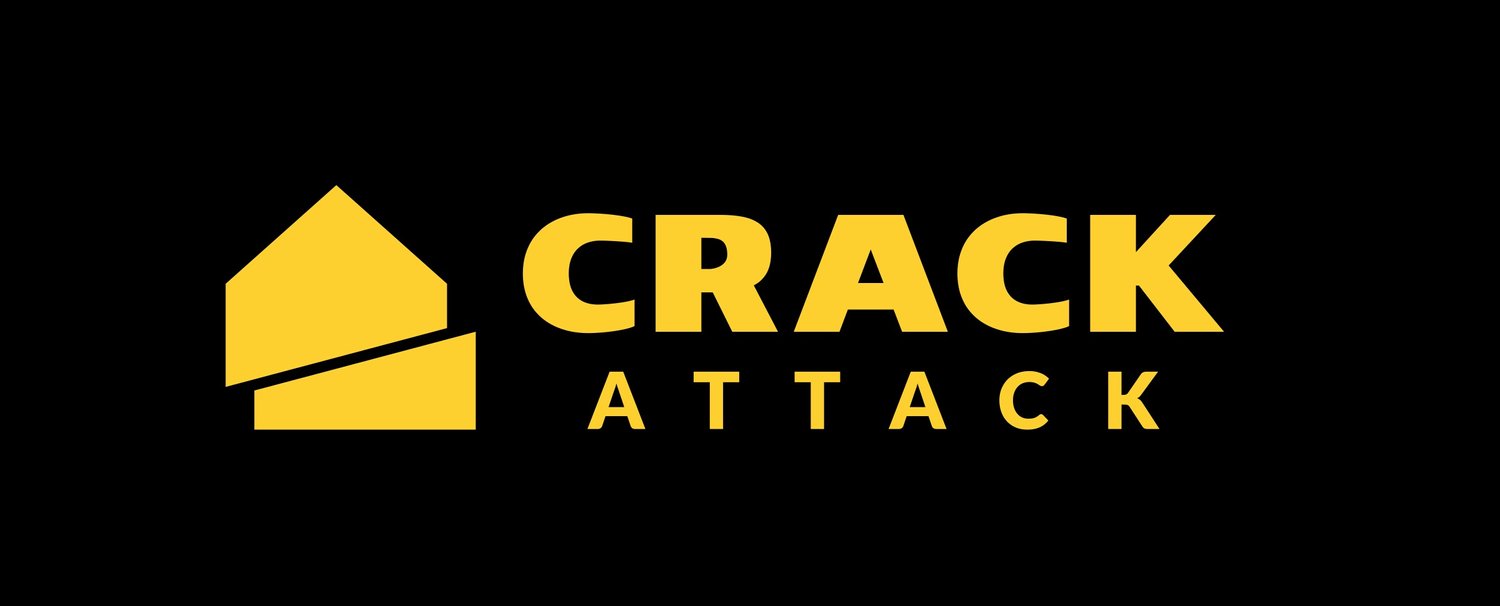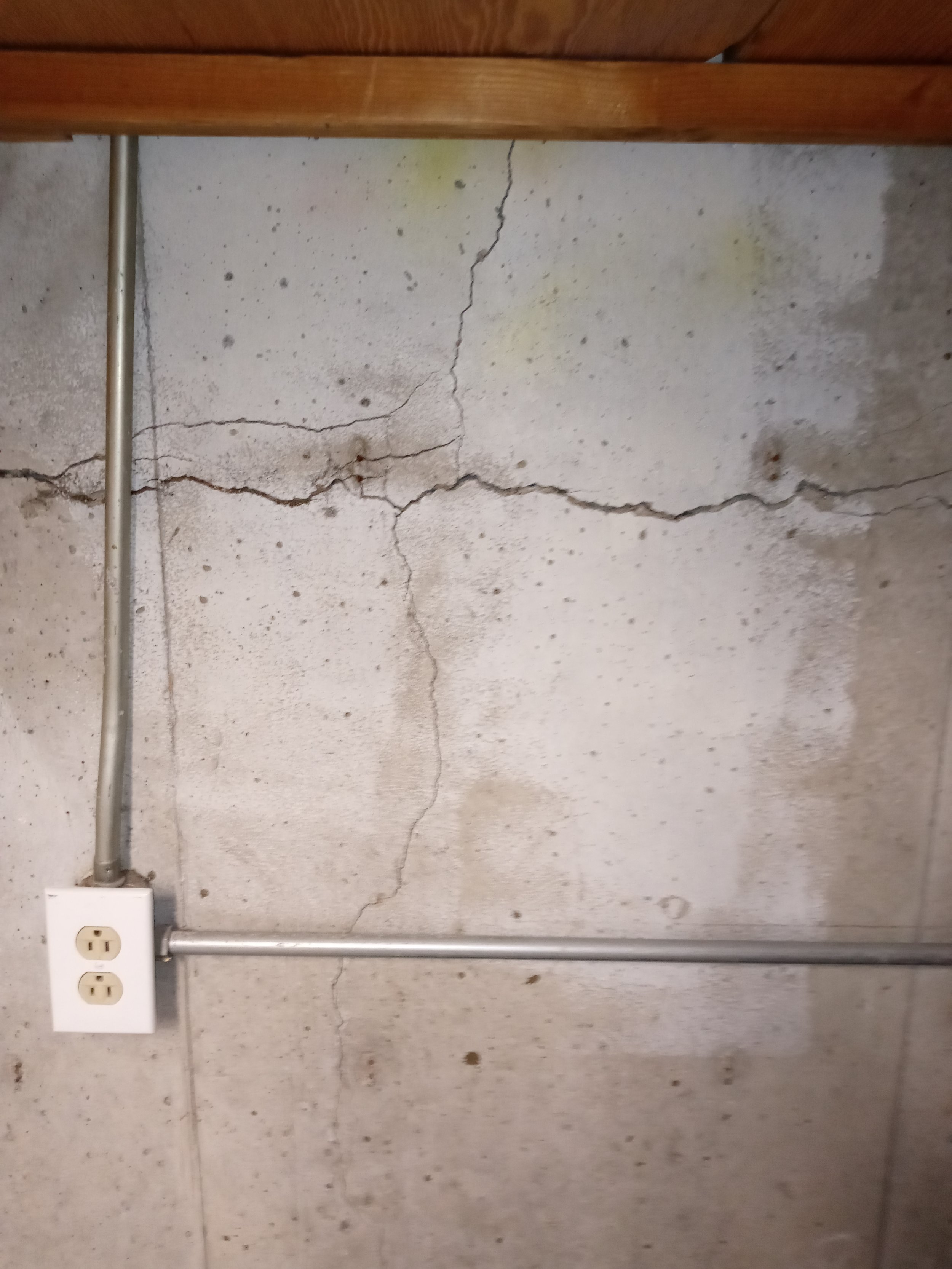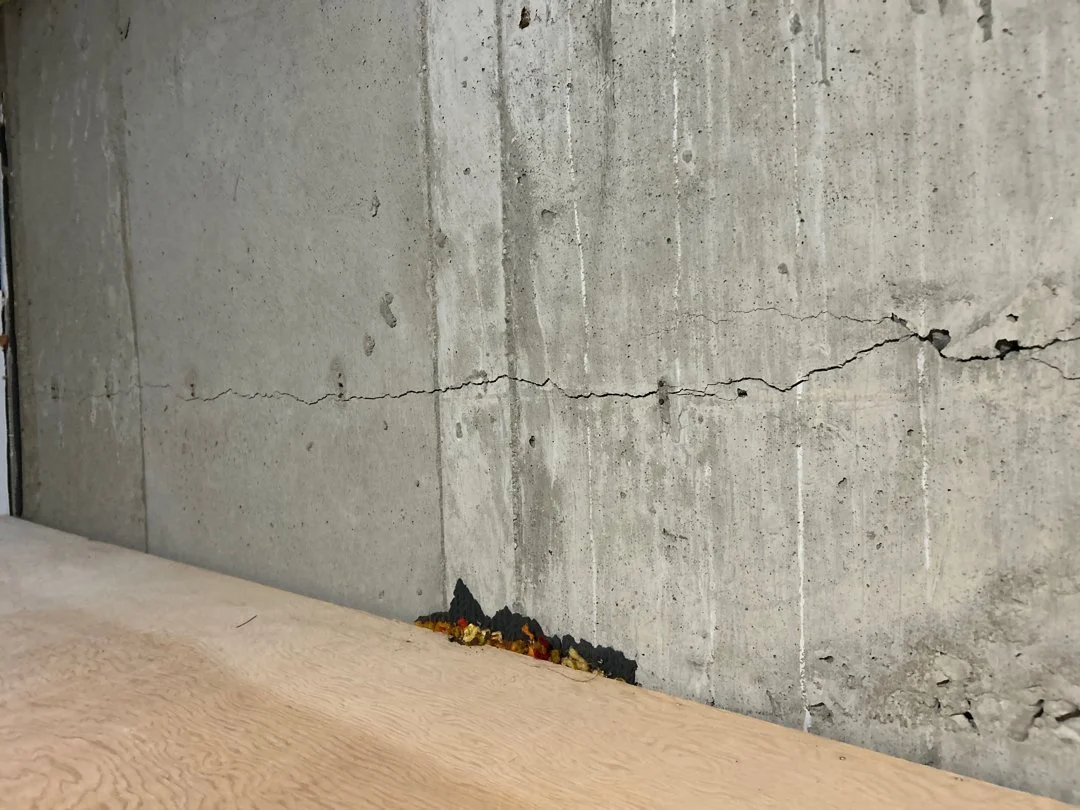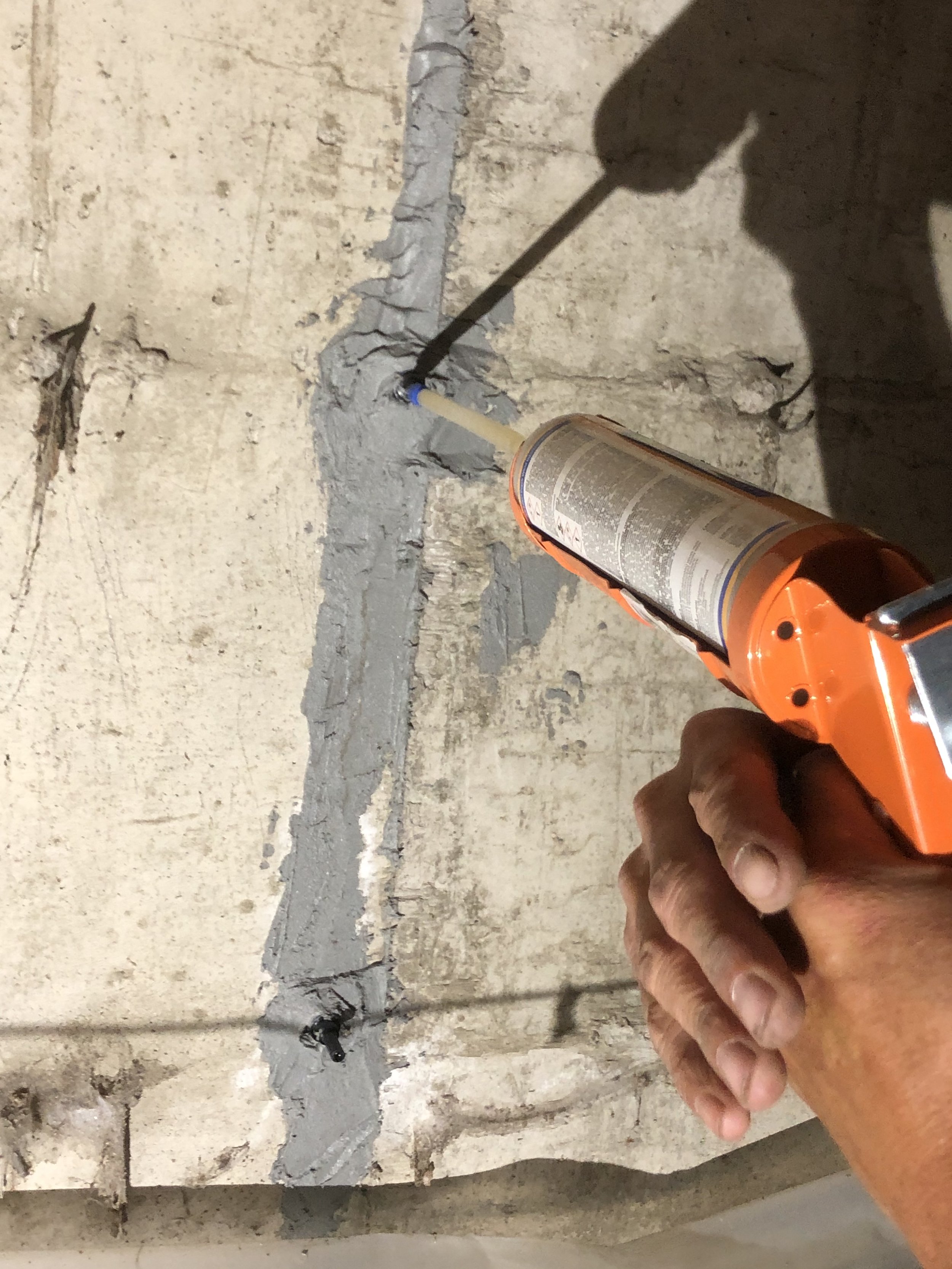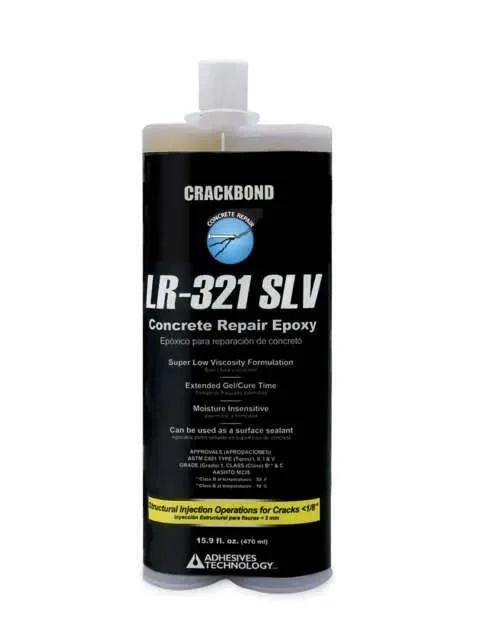How to Repair Foundation Cracks: A Homeowner’s Guide
If you’re staring at a crack in your basement wall and wondering, How do I fix a crack in my foundation? - you’re not alone. Foundation cracks are incredibly common in Colorado homes, especially with our shifting soils, moisture changes, and freeze-thaw cycles.
At Crack Attack, we’ve seen it all - from hairline cracks that just need sealing to structural gaps that call for serious reinforcement. So let’s walk through everything you need to know about how to repair foundation cracks, the products we trust, and when a crack might mean it’s time to take action.
A horizontal crack in the foundation wall caused by corroded rebar within the concrete.
Understanding Foundation Cracks
Before we talk about how to fix a cracked foundation, it’s important to understand the type of crack you’re dealing with. Not all foundation cracks are created equal - some are harmless, others are signs of deeper structural issues.
Common Types of Foundation Cracks:
Vertical Foundation Wall Crack
Horizontal Foundation Wall Crack
Vertical Cracks
Usually caused by natural settling
Most common and least concerning
Can often be sealed with epoxy injection
Diagonal Cracks
Typically appear due to uneven settling or moisture pressure
May need additional monitoring but are usually repairable with epoxy
Horizontal Cracks
Often a sign of foundation wall bowing or hydrostatic pressure
These are structural and should be evaluated ASAP
Usually repaired with carbon fiber reinforcement + epoxy
Stair-Step Cracks (in block or brick)
Follow mortar lines in a zig-zag pattern
Often related to soil movement or moisture issues
So, should you be concerned about a foundation crack?
It depends on the location, width, and whether it’s growing or leaking. That’s why we always offer free evaluations - so you’re not left guessing.
How to Repair Foundation Cracks (the Right Way)
Now that we’ve identified what you’re working with, let’s talk about the solutions. Whether you’re a DIY warrior or hiring a pro, here’s what goes into epoxy injection foundation repair and other common techniques.
Low-viscosity epoxy injected into foundation crack.
Epoxy Injection Foundation Repair
This is our bread and butter at Crack Attack - and one of the most effective methods for sealing cracks from the inside out.
The Process:
Surface of the crack is cleaned and sealed
Injection ports are installed every 6-8 inches
Epoxy is injected using low pressure, filling the crack from the back to the front
Ports are removed and the wall is finished off cleanly
This method bonds the concrete back together and stops moisture from getting in. It’s great for vertical and diagonal cracks, especially when caught early.
Carbon Fiber Strap
Carbon Fiber Reinforcement
For cracks showing movement or located in high-pressure areas, we often pair epoxy injection with carbon fiber staples or straps. These provide added strength and prevent the crack from expanding over time.
This is especially useful for horizontal cracks, which are more likely to be structural.
Hydrophilic Grout Injection (Water-Active Cracks)
If you have active water leaking through a foundation crack, we use DE NEEF® hydrophilic polyurea grout, which expands upon contact with moisture to form a flexible, watertight seal. This method is ideal for stopping leaks in both poured concrete and block foundations.
To improve the effectiveness of the repair, we often pack the crack with oakum rope soaked in grout prior to injection. This helps anchor the material and ensures deep penetration into the voids behind the wall.
This approach works especially well in wet or actively leaking conditions, where traditional epoxy injection would not be effective.
Recommended Products: Crackbond LR-321 SLV
When it comes to epoxy, we don’t cut corners. One of our go-to products is Crackbond LR-321 SLV, a low-viscosity structural epoxy injection resin designed for fine to medium width cracks.
🔗 Learn more about Crackbond LR-321 SLV
Why we trust it:
Deep penetration for even the hairline cracks
High bond strength
Great for structural and non-structural repairs
Works in both dry and damp conditions
Whether we’re repairing a small cosmetic crack or reinforcing a major stress point, LR-321 SLV helps us deliver durable, long-lasting results.
Can I Repair a Foundation Crack Myself?
That’s a fair question - and the answer is: Sometimes. For very small, non-leaking cracks, a DIY repair kit may work for sealing the surface. But for anything deeper, wider, or water-active, it’s worth bringing in a professional.
Signs you should call in a pro:
Crack is wider than 1/8”
Crack is leaking or damp
You see horizontal movement or bowing walls
There are multiple cracks appearing in a short time
You’re unsure if it’s structural
Let’s Fix It Right the First Time
We know it’s not fun to deal with foundation cracks - but fixing them now can save you thousands down the line. Whether you’re worried about water intrusion, structural damage, or just want peace of mind, Crack Attack is here to help.
Our approach is simple:
Free on-site evaluation
No-pressure quote
Fast, effective repairs with top-tier materials
Ready to Get Started?
Contact Crack Attack today to schedule your free evaluation. We’ll help you figure out how to repair foundation cracks the right way - without the guesswork, without the gimmicks.
